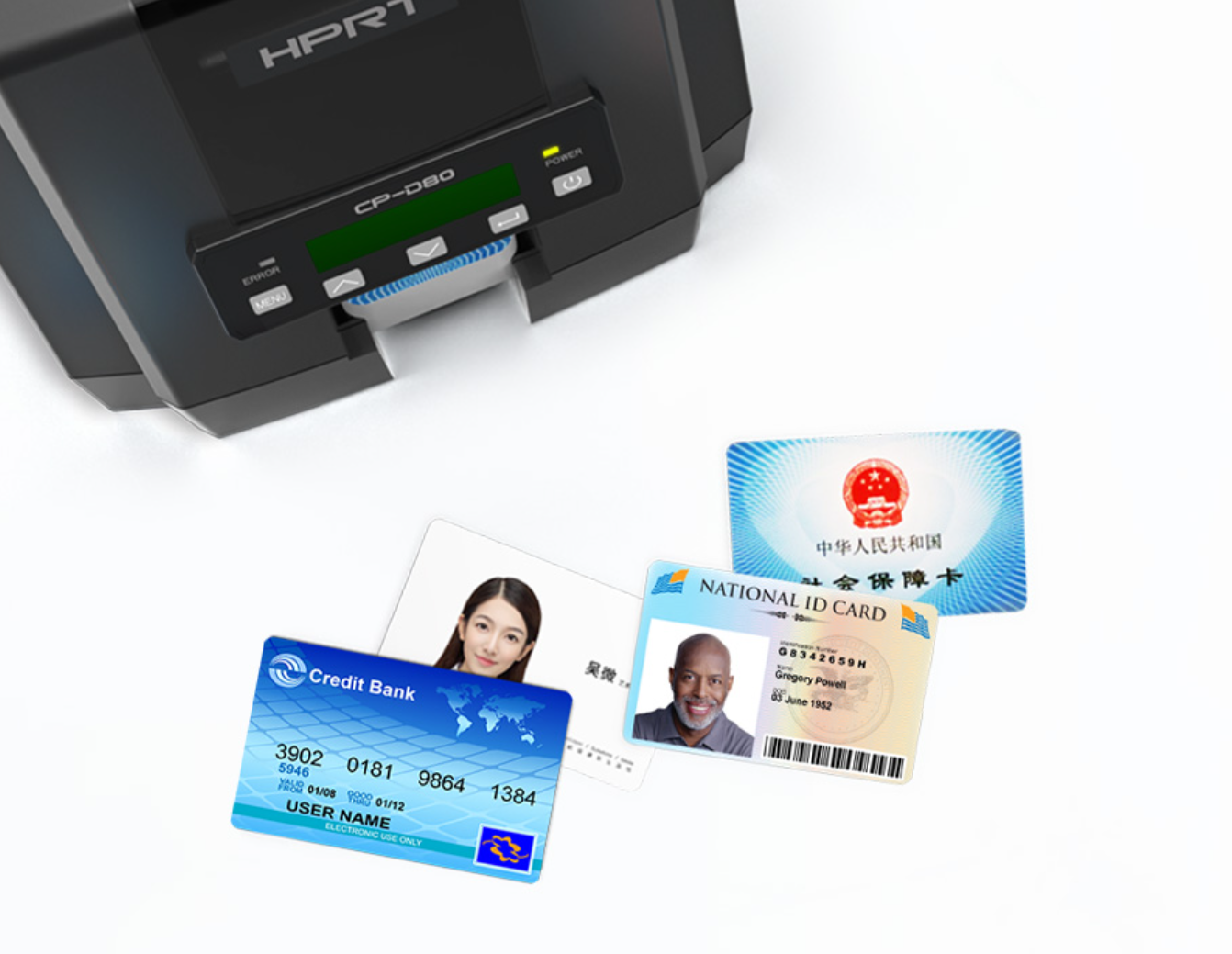"unfolding Nfc Technology in Printers: Understanding Its Implementation And Implications"
Introduction
Printers have evolved tremendously over the years, integrating ground-breaking features to streamline and enhance the user experience. One such empowering technology making waves in the printing world is Near Field Communication (NFC). This comprehensive guide aims to deepen your understanding of NFC technology's implementation and implications in printers. Join us as we explore its working mechanism, advantages, real-world applications, and the transformative potential it holds for the printing industry. We'll also address common questions regarding its security, accessibility, and potential challenges.
What Is NFC Technology?
Near Field Communication, often abbreviated as NFC, is a crucial technology transforming the way electronic devices communicate. But what exactly is it? Let's delve into the basics of NFC technology, its implementation in printers, and how it's remaking the user experience.
1. NFC Integral: At its core, NFC is a set of communication protocols. These protocols power two electronic devices to talk to each other when they are within just a few inches. Worth noting is that both gadgets should be NFC-enabled for the technology to work effectively.
2. NFC in Printers: NFC technology has become quite the game-changer in the printing space. Primarily, it orchestrates a seamless transfer of data from an NFC-compatible phone to the printer, thus bypassing the need for cables. In fact, it's now as simple as touching your mobile device to your printer for a command to print.
3. Booking Convenience: The choice to eliminate cables and simplify the procedure to touch-and-go brings unprecedented convenience to the users. Moreover, by eliminating the need to manually choose the correct printer and fumble with wirings, NFC technology has done away with a few hassles, reducing the chances of errors.
Through the sophisticated protocol of NFC technology, printers are now more accessible, prompt, and easier to use, which is globally reshaping our printing experience.
How Does NFC Technology Work in Printers?
To fully comprehend how NFC technology works in printers, we must delve into the operational mechanics of the process.
1. NFC Tag:
To start with, a fundamental component of the process is the NFC tag housed within the printer. This tag is essentially a small microchip containing pieces of data relevant to the printer.
2. Establishing Communication:
The next step is to bring your NFC-enabled mobile device into close proximity with the printer. Once the device is within range, NFC technology activates, facilitating quick pairing between your device and the printer without needing any physical wires.
3. Data Transfer Process:
After activating the NFC on your mobile device and choosing the document you wish to print, you merely touch your mobile device to the printer, triggering the data transfer process. This procedure is much simpler than routing a file through various devices or connecting cables, making NFC a handy feature.
4. Printing Command:
The final step is the execution of the print command. Once the data has been transferred to the printer, it processes the information and subsequently prints out the required document. This entire process, from touch to print, happens within a matter of seconds.
To summarize, NFC technology streamlines the printing process by allowing your mobile device to communicate with the printer instantaneously without the need for physical connections or complex setups.
What Are the Advantages of Using NFC-Enabled Printers?
The utilization of NFC technology in printers brings with it numerous advantages that significantly enhance user experience and cater to efficient and swift printing needs. These advantages provide a comprehensive understanding of why NFC-Enabled Printers are becoming a popular choice:
1. Simplified Printing Process:
NFC technology streamlines the printing process with an easy and quick setup, eliminating cumbersome printer selection or manual installations.
2. Wire-Free Convenience:
NFC printers render wires redundant. All that's needed for a successful print is the proximity of your NFC-enabled device to the printer. This cable-free feature effectively reduces clutter around your workspace.
3. Integration with Cloud Services:
Many NFC-enabled printers support cloud printing services, allowing users to print files directly from their cloud-based applications. This feature enhances accessibility, allowing you to print documents from anywhere, at any time.
4. Increased Security Measures:

NFC technology offers a secure data transfer option as the communication happens over an extremely short distance, minimizing the risk of data interception.
5. Quick Pairing:
NFC-enabled printers and devices pair instantaneously, saving time and ensuring a quick turnaround for your printing needs.
In summary, NFC-enabled printers provide a quick, effortless, and more secure printing solution. This technology holds the potential to revolutionize how we approach printing tasks, leaning towards a hassle-free, swift, and secure method that accommodates our growing reliance on digital storage and wireless connectivity.
What Are Some Real-World Applications of NFC Printers?
The advantages of NFC printers become more apparent when inspecting their real-world applications. Their considerable convenience and quick setup translate into time efficiency and improved user experience in various settings. Here's a more detailed look at how NFC printers have found their place in several sectors:
1. Corporate Workspaces:
In a fast-paced corporate environment, every minute counts. NFC printers help save valuable time by simplifying the printing process, directly contributing to enhanced productivity. During meetings, participants no longer need to grapple with tangled cables or complex printer setups - send a document to print with just a simple tap.
2. The Retail Industry:
In retail, speed is key to customer satisfaction. NFC printers play a magnificent role here by accelerating receipt printing. By slashing transaction times, these printers significantly improve customer service and overall retail workflow management.
3. Healthcare Institutions:
In healthcare settings, every second is precious, and immediate access to information can be vital. NFC printers excel in these environments, allowing healthcare providers to print patient records, prescription details, and other crucial information instantly with minimum fuss.

4. Home Use:
Even for everyday domestic applications, NFC printers have managed to make a mark. They offer a quick and easy way for home users to print a range of items such as photos, tickets, recipes, and more, directly from their smartphones. The convenience of use and simplified setup make NFC printers a popular choice for personal use.
5. Education Sector:
Institutions can benefit from NFC printers by providing students an easy, quick and reliable printing solution for their course materials, assignments, and projects.
Statistically speaking, research forecasts that the global NFC market will reach $47.43 billion by 2024, growing at a compound annual growth rate (CAGR) of 21.6% (source: Grand View Research). With such market prospects, it's evident that the practical applications of NFC technology, particularly in printers, are set to expand even further in the coming years.
How Is NFC Technology Transforming the Future of the Printing Industry?
As we look forward to the future of the printing industry, the implementation of NFC technology is significantly altering its landscape. Here's how:
1. Remote Printing: The NFC-enabled printers are likely to align more closely with cloud servers, potentially enabling remote printing. This feature will help businesses work in a more efficient and streamlined manner.
2. Compact Designs: As we shift towards more mobile working environments, there is an increasing demand for portable devices. NFC technology is meeting this demand by supporting the development of more compact and mobile-friendly printer models.
3. Enhanced Security: Future printing industry could witness increased security measures, thanks to NFC technology. Potential developments could also include keystroke encryption, further enhancing the level of security during data transfer.
4. Industry Expansion: NFC technology will not only innovate but also expand the printing industry. The framework around NFC technology is getting stronger, suggesting a coming era of broader and more diverse applications in the printing industry.
To sum up, NFC technology in printers is undoubtedly opening new horizons in the printing industry. It invites a future where printing is quicker, easier, safer, and in line with the growing digital trends.
Conclusion
NFC technology enhances the functionality of printers, making them more efficient, user-friendly, and secure. As we continue to embrace a digital future, the transformational potential of NFC technology in the printing industry looms large, promising a simplified, faster and smarter printing experience across sectors.
Related FAQs about what is nfc technology in printers
How secure is NFC technology in printers?
NFC technology is considered secure as it operates over a short distance, reducing the risk of data interception. Moreover, many NFC-enabled devices employ encryption when transferring data, offering an extra layer of security. However, like any technology, one should employ best practices to ensure data safety.
Can all printers use NFC technology?
Not all printers can use NFC technology. It is predominantly found in modern printers designed with wireless printing capabilities. Therefore, users should check the product specifications of the printer to ascertain if it is NFC-enabled.
What potential challenges do NFC Printers face?
While NFC Printers offer numerous advantages, they aren't without challenges. Mainly, the short transmission distance of NFC could limit its usability. Also, the device initiating the printing needs to be NFC-enabled, which might not always be the case.


